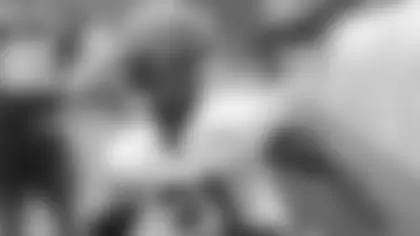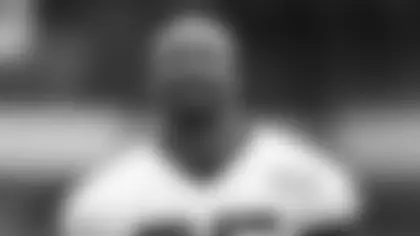On the same October night the Cleveland Browns won their third straight game in 2012, they lost their starting quarterback, Brian Hoyer, for the balance of the season after he suffered a torn anterior cruciate ligament (ACL) in his right knee while sliding near the sidelines and being hit by a Buffalo Bills defender at the same time.
In the days following the injury, and even before the surgery to repair the ACL, Hoyer began strengthening the muscles around his weakened knee and found many benefits to an increased stretching regimen.
"I've never been a big stretch guy, but after going through this and stretching every day, you definitely feel the difference," Hoyer said. "Your muscles feel a little elastic and you bounce back a little bit quicker from certain things."
While fighting off initial frustration after not being able to lead the Browns' offense for the remainder of the season, Hoyer began to understand the importance of consistently working to strengthen his body while going through the rehabilitation process.
"The frustration definitely sets in sometimes when I'm doing stuff like this when I'm like, 'What the heck is this stuff doing for me? I'd rather be out throwing the football, running, whatever,'" Hoyer said. "You realize everything is part of the plan, and it's all to get you better.
"Now, it's pre-hab. You're pre-habbing things for when you're back out playing so something like this doesn't happen again. There's definitely some frustration, but when you realize it's all for the betterment of your leg and your overall process, I think you can attack everything the way I attack the game plan or study film. If I take that mentality, I'll be back in no time."
Hoyer spends nearly an hour stretching and going through rehabilitation exercises, which act as a warm-up to his strength training in the weight room.
His day starts by using foam rollers to help lengthen the tissues that are active. First, he focuses on the hamstring, and then, the IT band. Then, he builds up the calf muscles, as well as strength-building in his lower legs.
According to Hoyer, loosening up the IT band hurt badly following the surgery, but after months of work, they "are now pretty loose."
"It's almost like a deep-tissue massage-type feel," Hoyer said. "You find a spot that is really the most sore. You find a little knot in there and hold it for 30 seconds. It's the not the most fun thing to do, but you definitely feel its benefits.
"It seems like little stuff, but (Browns assistant athletic trainer Gordon Williams) said it the other day, 'Rehab is sometimes the best thing for someone.' You kind of work on things you never thought you had to work on before. I've done a lot of stretching. You can see how your muscles open up a little bit and they're not so tight. You're making them more supple so the movements because a little bit easier."
In addition to strengthening the muscles, stretching acts as a vehicle to potentially prevent future injuries.
"One thing we're working on with Brian is compensation patterns that might develop after his surgery due to being immobilized for a little while and pre-disposing stuff that could come up with the rehab starting up," Williams said.
"We're constantly monitoring. It's more of a proactive style of rehab so that when he comes back and he's running, he doesn't have any issues that would cause him to be more likely to have hamstring strains, quad strains, and also, a possible further ACL tear from a non-contact standpoint. Anything we can do to prevent that is definitely a benefit.
"This will help Brian. As he's beginning to run now and everything, it's helped him become more fluid. His movements are better because his muscles are working the right way."
While building strength within his muscles, Hoyer pushed himself to walk again as soon as he felt his knee was ready, which, he said, helped more than anything.
"Once I felt like I didn't need crutches, I just started walking again," Hoyer said. "I think that really sped up the process because I got to the point where when I was at home, I didn't really feel like I needed them, so I walked without them. I was really careful. I wore a brace, but I activated those muscles again. It probably didn't look like the prettiest thing, but it kept those muscles from really atrophying. It just got better and better to the point we're at now."
Williams added, "Everything is about progressions for us. There's a process to it. You start with the foundation. In the weight room, we start with more stabilizing exercises, working on muscular endurance, working on stabilizing muscles around each joint and everything to make sure the joint's ready to begin into the heavier lifting and more demanding exercises."
Although Hoyer may be anxious to get back on the field for more than just tossing the ball around, as he does as part of the rehabilitation process, he continues to strengthen every muscle in his body with the goal of being in the huddle for the offseason workouts in April.
"We've put a lot of hard work and hours in," Hoyer said. "I usually stay a little bit extra and try to do some more recovery-type things, ice, strengthening-type things, you can definitely see the work that we've put in paying off. It gets you excited because at this point, April is two-and-a-half, three months away and that's when we'll start back up. That's my goal, to be back by then."














